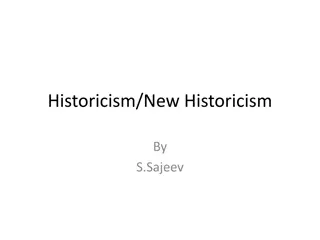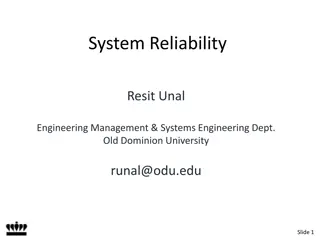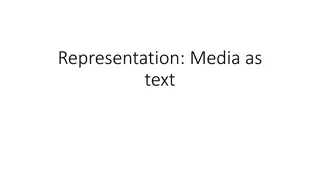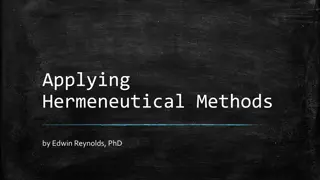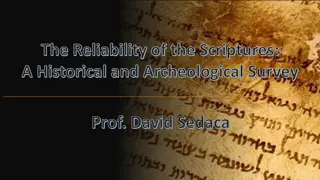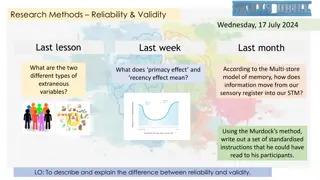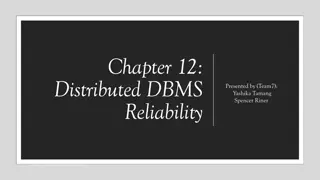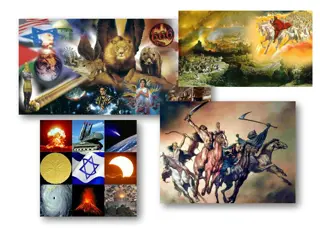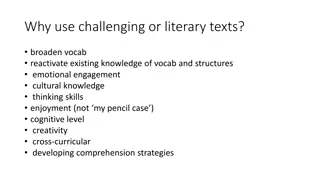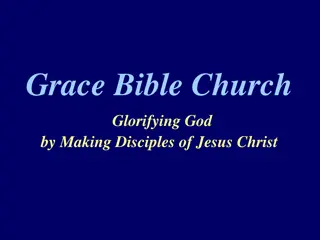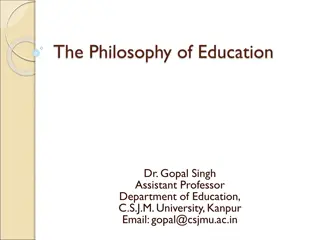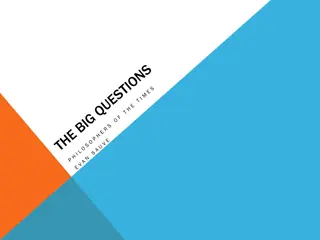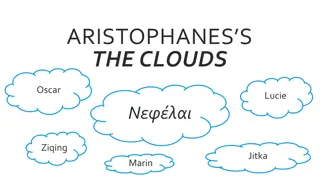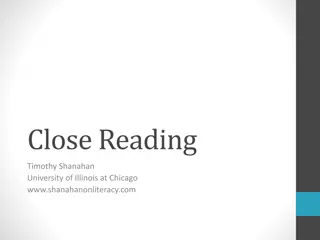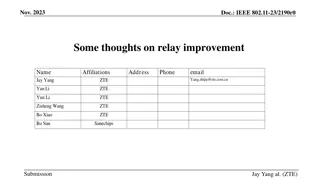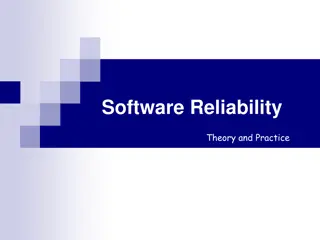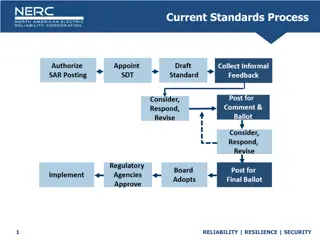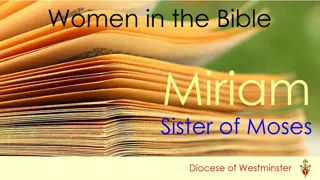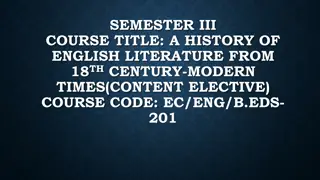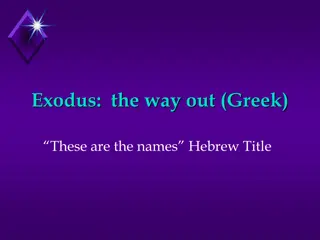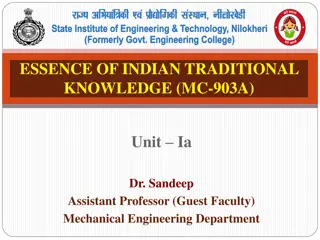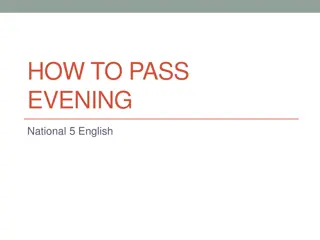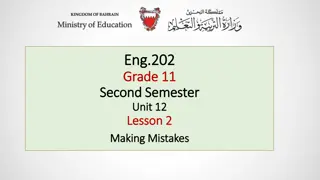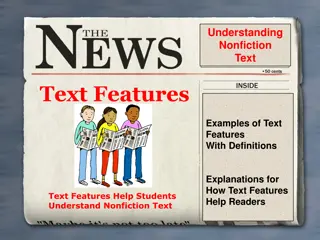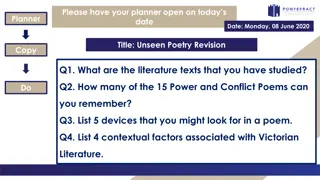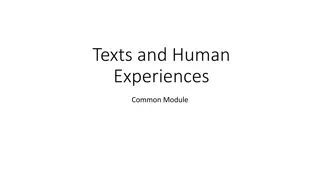Examining the Reliability of Historical Texts: From The Bible to Socrates
Investigating the unparalleled popularity of the Bible, the historical significance of Christianity, the reliability of documents related to Socrates, and the critical analysis of potential mistakes in historical texts through comparisons and archaeological findings.
Download Presentation

Please find below an Image/Link to download the presentation.
The content on the website is provided AS IS for your information and personal use only. It may not be sold, licensed, or shared on other websites without obtaining consent from the author. Download presentation by click this link. If you encounter any issues during the download, it is possible that the publisher has removed the file from their server.
E N D
Presentation Transcript
The Bible is historys number one bestseller by a factor of about ten. Six billion copies have been sold. Admittedly, it had a head start on other books; it was the first item of the modern printing press. But it has been number one every year since records have been kept-except for 2007, when Harry Potter and the Deathly Hallows topped the list, with forty-four million sales. Unlike most bestsellers, however, the Bible actually increases sales each year. The latest figures for the Bible are hard to fathom. It sold thirty million copies in 2009 alone. That s 82,000 copies a day, 3,400 copies an hour. That means someone gets a Bible every second. All the Bibles sold would reach the moon almost three times and circle the earth more than 28 times
Youre an historian studying the life of Socrates (born c 470BC) the first Western philosopher. What kind of information do you look for? What do you expect to find? How will you know if the documents about him are reliable or not? What tests will you use to determine this?
1. Christianity is historical: the heart of the Christian faith is a series of events recorded in a collection of histories and letters The Gospels are widely recognised by historians (people who study history) The New Testament contains a collection of independent evidence about Jesus: many of the books in the New Testament were written independently of each other. The New Testament sources are written close to when the events occurred Before the New Testament was written, the words and deeds of Jesus were preserved by oral tradition Non-Christian writings confirm the broad outline of Jesus life Absence of evidence is not evidence of absence The New Testament is probably the best preserved text of all ancient history Archaeology confirms important facts about the world of Jesus Jesus is more trustworthy than we are trusting: it isn t about us having no doubts. It s about us developing a sense (however strong that sense might be) of the dependability of Jesus himself. 2. 3. 4. 5. 6. 7. 8. 9. 10. John Dickson Founding Director of the Centre for Public Christianity and Honorary Fellow of the Department of Ancient History at Macquarie University www.eternitynews.com.au/good-news/10-reasons-you-can-trust-the-bible/
Are there mistakes in the Bible?
How do we find out?
Its all about comparing copies copies from different times and places
The Dead Sea Scrolls have provided Old Testament manuscripts approximately 1,000 years older than our previous oldest manuscript. They have demonstrated that the Old Testament was accurately transmitted during this interval... Over six hundred scrolls and thousands of fragments have been discovered in the 11 caves of the Qumran area. Fragments of every Biblical book except Esther have been found including a well-preserved copy of the entire prophecy of Isaiah - the oldest copy of an Old Testament book ever to be discovered Dr. Bryant Wood, archaeologist www.christiananswers.net
AUTHOR WHEN WRITTEN EARLIEST COPY TIME SPAN No. OF COPIES Homer Iliad 900 BC 400 BC 500 years 643 Caesar The Gallic Wars 100 - 44 BC 900 AD 1,000 years 10 Plato Tetralogies 427 - 347 BC 900 AD 1,200 years 7 Aristotle 384 - 322 BC 1,100 AD 1,400 years 49 Herodotus History 480 - 425 BC 900 AD 1,300 years 8 Euripides 480 - 406 BC 1,100 AD 1,500 years 9 New Testament 130 AD 200 AD 40 years 110 years 50 - 90 AD 24,000 school.carm.org: This chart was adapted from charts in Evidence that Demands a Verdict, by Josh McDowell, 1979, pages 42 and 43
The Bible contains different text types that have different purposes. We need to consider the purpose of the different books in the Bible to understand the truth contained in them. Activity Have a look at a Bible. Write a list of as many different text types as you can find e.g. poetry.
Read Luke 15:8-10 8 Or suppose a woman has ten silver coins and loses one. Won t she light a lamp and sweep the entire house and search carefully until she finds it?9And when she finds it, she will call in her friends and neighbors and say, Rejoice with me because I have found my lost coin. 10In the same way, there is joy in the presence of God s angels when even one sinner repents. (NLT)
1. Do you think the author believed this story was a real event? Why or why not? 2. What do you think the author s purpose was in recording this story? 3. What truth is Jesus trying to communicate in this story? 4. Can something that does not happen still communicate truth? 5. What does this tell us about truth?
1. Do the artworks accurately capture what the parable is trying to communicate? 2. Do the different features in each picture impact the truthfulness of the picture? Why or why not? 3. Would it be possible to paint a picture of the parable that was untruthful ?



